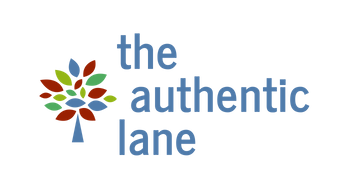Inquiring About Each Other's Pasts
Photo by Yuval Zukerman on Unsplash
“There's always another story. There's more than meets the eye.”
~ W.H. Auden
Last week I wrote about the rewards of being curious and joining other people’s worlds. As interesting as it can be to meet people where they are in the present, it can also be fun and rewarding to learn about their pasts.
Many of us have reinvented ourselves at various points in our lives, either out of necessity or a desire to do something more meaningful as we evolve. When we meet people later in life, we don’t always think to share what we used to do at earlier stages, unless we’re asked about it.
In my About page on my website, I reveal that in my first job after college, I was a technical writer at a software company. Before that, I was a professional seamstress. I’ve been a freelance writer and editor for so long that I rarely think about those jobs anymore unless a relative or longtime friend brings them up.
I recently finished editing my older sister’s short memoir for her grandchildren and I was excited to learn a few details I didn’t know about her life. The same thing happened when I worked on my brother’s business memoir and my middle sister’s caregiving book. In very large families, the older siblings can be a decade or so older than the youngest, so there are parts of each other’s lives you simply miss out on. We’ve been very intentional of late in our Zoom sessions about trying to fill each other in on our childhood interests and jobs, and it’s been a lot of fun.
No matter how well we think we know a person, we can’t know everything that has happened to them.
Sharing our stories enriches our experience of each other.
When I worked in employee development in my 40s, one of my favorite team-building exercises was to ask employees to tell about the most interesting or unusual jobs they’d ever had. I was always amazed at the variety of jobs described, from painting warehouses to creating brownie sundaes in an ice cream plant to working on an oil rig. Knowing more about each other’s histories strengthened the team members’ bonds and forged better working relationships between them going forward.
Most of us are not one-trick ponies.
We all have fascinating back stories that would amaze others, if only they knew about them.
It reminds me of the Hallmark movies where the ambitious female lead typically meets a guy who is an inn owner or Christmas tree salesman in her idyllic hometown. She is attracted to him at first, but much more so after she finds out that he used to be a “data analyst at a New York firm” or better still, “a royal prince.” The commonly used trope (overused film device) is parodied in this hilarious video by YouTube stars The Holderness Family (of “In Your Christmas Jammies” fame).
As those movies show, finding out about people’s earlier jobs or roles expands our perception of them and affords us an opportunity to find additional points of connection.
Sometimes, all it takes for us to learn more about people is to ask.
A few weeks ago, I mentioned that I had started reading David Brooks’ book “How to Know a Person” and promised to report back on it. In it, he explains what it takes to make others feel valued, heard, and understood. He suggests that we can create the opportunity for connection by being “tender, generous, and receptive” in our approach.
When we’re first getting to know someone, Brooks explains, making small talk while doing mundane things together helps us “attune with each other’s energy, temperament, and manner.” This fosters a relaxed state of awareness and allows us to feel safe with each other.
The next step to creating deeper relationships can be as simple as asking friends and relatives, “Tell me about…”
Our histories are made up of all the wondrous and tragic things we have experienced, the important decisions we have made, and the people who have affected the course of our lives.
Oh, the stories we have to tell!
Being asked about them opens the door to the intimacy many of us are so desperately craving. Harvard psychologist Robert Kegan, whose quote Brooks shares in his book, says, “What the eye sees more deeply the heart tends to love more tenderly.”
Affectionately,
Elaine

